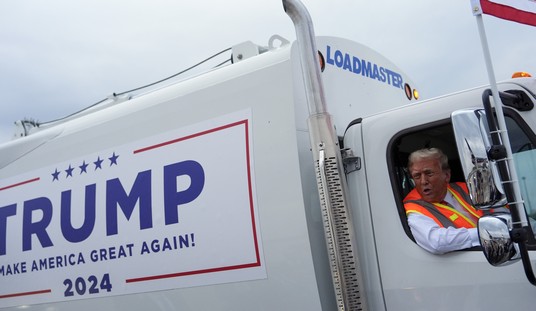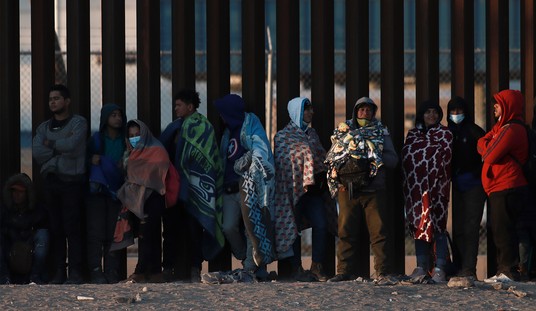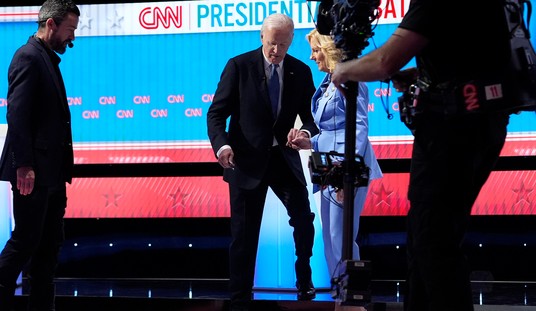Just because a thing can be done does not mean it should. And even before one considers that, it helps to verify that the thing can be done at all. In the wake of the Indiana primary and the concession of the Republican presidential nomination to Donald Trump by Ted Cruz and John Kasich, a number of conservatives want a do-over. Earlier today, Bill Kristol of the Weekly Standard told our own Larry O’Connor during his morning show on WMAL that he was actively working to find a third-party candidate with better character and temperament than either Trump or Hillary Clinton.
Now, Bill Kristol has worked tirelessly in the trenches for decades on behalf of conservative principles, policies, and values. He’s earned our admiration and respect, and we’ve earned Bill’s friendship over the years. Bill’s heart is in the right place, but this project won’t stop either Trump or Hillary Clinton, nor will it address the woes in which conservatism and the Republican Party find itself at the moment.
In no particular order, here are a few reasons why a third-party run won’t work in any sense:
Mechanics – Simply put, there’s no time to get it done. Philip Bump has more details on this at the Washington Post, but in short, state deadlines for getting petition signatures for ballot access start coming next week. Michael Bloomberg passed in March on trying it, and he had a personal fortune to fund an effort. We do have a multi-billionaire reportedly capable of self-funding such an effort, but, er … Donald Trump’s booked up this summer and fall.
Money – Even assuming there would be enough time to get on enough state ballots, just the petition drives alone would cost millions of dollars. Then it would take tens of millions to put together even rudimentary state organizations to mirror what the two major parties do in the field for their candidates. And conservatives would likely need to cannibalize the GOP’s talent pool that will be in use to protect the House and Senate majorities in order to build those organizations. Where is all that money? And where was it during the primaries, and how much good did it end up doing there?
Candidates – The two names most associated with this idea are retired Marine Corps General James Mattis, and Senate Ben Sasse of Nebraska. Mattis has repeatedly said he won’t do it. Sasse remains staunchly opposed to Trump, but what other qualities does Sasse have that will make him so compelling as to compete against two major-party nominees in the general election? Bear in mind that Republican primary voters already rejected a staunchly conservative one-term Senator in Ted Cruz, and arguably another in Marco Rubio, both of whom sternly opposed Trump as the party’s standard-bearer. How would Sasse do better in a general election than either Cruz or Rubio among Republican voters, and what accomplishments does Sasse have that sets him apart?
Outcomes – What would be the best possible outcome from such a project? H. Ross Perot organized his own political party and made it onto all 50 ballots, and yet the best he could get was 30% in Maine for a second-place finish and zero Electoral College votes. Some have suggested that a conservative candidate could draw enough votes to win enough states and throw the election to the House of Representatives, but it should be incumbent on them to specify which states they will win and what path they have to ensure neither Trump nor Clinton get to 270. At best — at best — the impact would be to take Electoral College votes away in deeply conservative states and weaken the GOP in swing states to the point that President Hillary breezes to her inauguration next January.
“Taking a stand” – Sure, one can comprehend the desire to take a principled stand against two candidates that they see as unfit for the office. Let’s say for the sake of argument that this effort actually ends up on the November ballot. What happens to the conservative movement when it gets the usual slice of the vote for indie runs — perhaps as high as 5%, maybe as low as 1%? That might do more damage to the conservative movement than another season in the wilderness, turning it into a joke.
An independent conservative bid ignores the core problem that created the Trump movement in the first place. In my column for The Fiscal Times, I argue that the real problem is the irrelevance that the conservative movement has created for itself, which this project might actually underscore if it came to fruition:
Evidence for this can be found in the exit polling in many states, but Indiana’s data speaks well enough to this. A third of all Republican primary voters identified as “very conservative,” but 45 percent of those voted for Trump, not Cruz. Another 44 percent identified as “somewhat conservative,” and 55 percent of those voted for Trump, too.
This took place just days after declaring his conservatism irrelevant. “I’m a conservative, but at this point, who cares?” Trump commented at the California Republican Party convention. “We’ve got to straighten out the country.”
Conservatives may scoff at hearing this, arguing that conservative policies and principles offer the only path to “straighten out the country.” However, Trump’s statement resonates with voters, especially those in swing states, who have tired of intellectual arguments far removed from the reality of their lives, and want pragmatic solutions for the issues facing the country, and especially their communities.
Rather than offer a futile effort at an independent presidential bid, conservatives should find ways to make conservatism relevant, especially in the communities that could really benefit from it:
Fortunately, conservatism is not destined for irrelevance. Some conservative organizations – Americans for Prosperity chief among them – have eschewed electoral politics and philosophical rhetoric in favor of community engagement. They make themselves part of their communities, offer real assistance to people while contextualizing free-market economics as the solution for the lives of those who live there.
An explosion of regulatory activity at the federal level now has Washington encroaching on the businesses and lives of more Americans than ever, the cost for which the Competitive Enterprise Institute estimates as $15,000 a year for every US household. That gives even greater opportunities for small-government conservatives to offer specific solutions that will improve the lives of people in a direct and concrete manner.
Conservatism has to be more than a debating society. It has to offer practical improvements, and in order to do that it has to engage people where they live. For too long, the conservative movement has mainly argued philosophy and employed obstructionism while assuming the rest of country understood the stakes. As this primary has demonstrated, even many self-identified conservatives have tired of ideology and all-or-nothing politics.
The primary is over. The opportunity for electing a movement conservative to the presidency in 2016 has passed. The opportunities to use this election to expand the movement and to make conservatism relevant to most Americans has not passed. Rather than tripping over ourselves to make a futile gesture, conservatives need to get back to work.







Join the conversation as a VIP Member